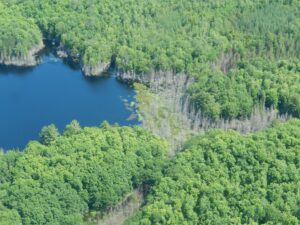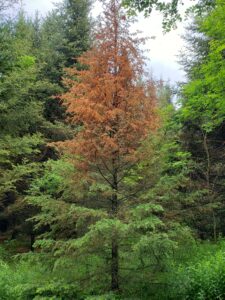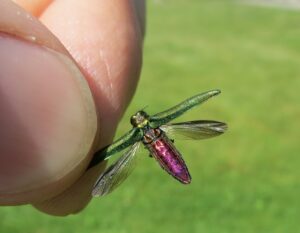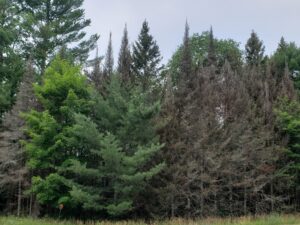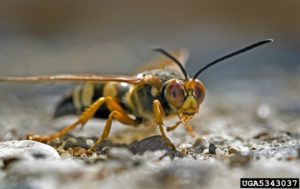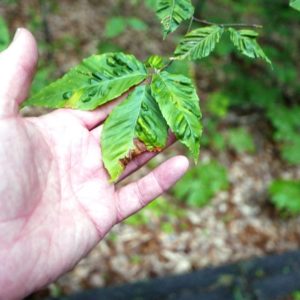By Elly Voigt, DNR Forest Health Lab Technician and Communications Specialist, Eleanor.Voigt@wisconsin.gov
Galls are woody swellings on the branches or trunk of a tree and can be caused by insects or fungi. Winter and early spring are the best times to notice galls thanks to bare branches. One type of gall, caused by Phomopsis fungi, occurs on northern red oak, hickory, maple and several other tree species.
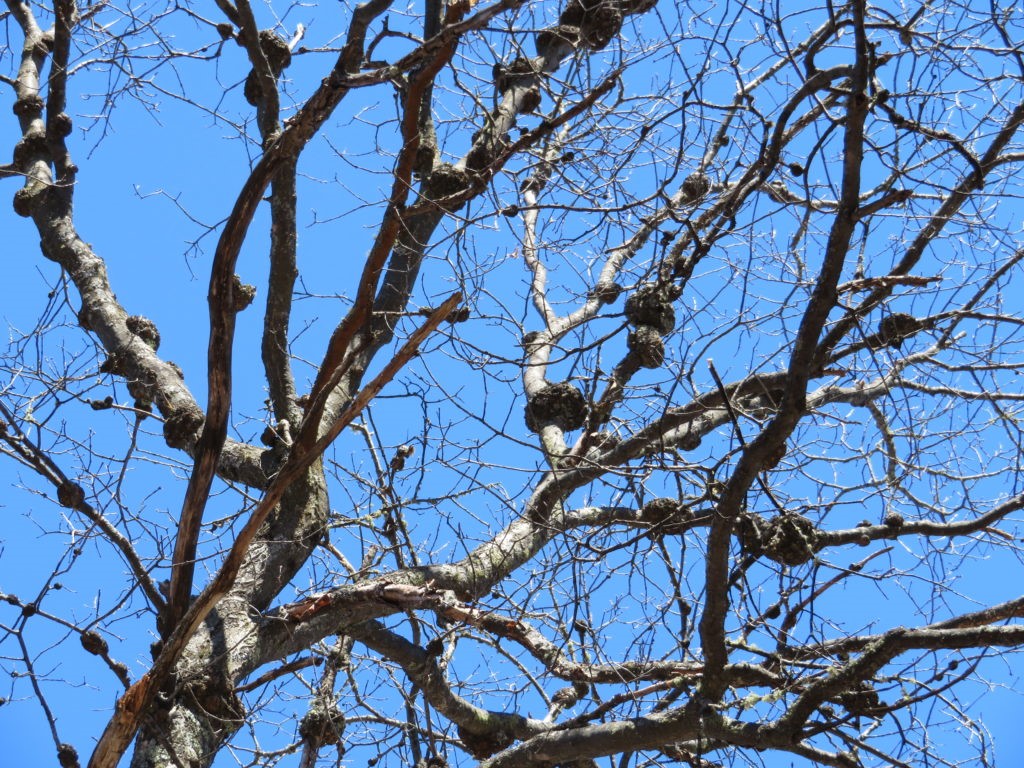
Phomopsis galls on the branches of an oak.
There will frequently be many phomopsis galls on one tree while nearby trees are completely unaffected, probably due to individual resistance differences. While small phomopsis galls have minimal effects on trees, larger galls can girdle branches, causing branch dieback. Galls grow very slowly, and many heavily affected trees survive for decades, even with a large gall on their trunk.
There are currently no treatment recommendations for Phomopsis galls, but you can prune and dispose of affected branches. Many landowners choose to let them be.


